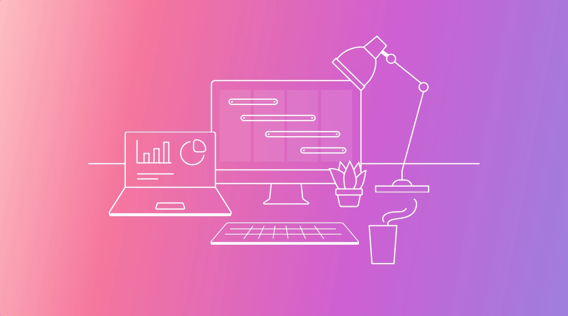Does your home office need a serious upgrade? How about your tech stack?
The right work-from-home tools can boost productivity and focus while helping you maintain healthy habits and work-life balance.
Working from home offers flexibility and freedom but requires the right remote work tools to ensure success.
From managing projects to staying connected with your team, your software can make all the difference. In addition, your hardware and office setup can impact your productivity and physical and mental health.
This curated list of work-from-home tools can help you stay organized, efficient, and connected while achieving a better work-life balance.
Work-from-home software
The first type of essential work-from-home tool is your tech stack. This will include any industry-specific or business-specific software required to do your work.
This can also include different categories of software used by remote workers across various industries.
These remote work tools range from those used by businesses to complete projects and connect employees to those used by individuals to stay organized and focused.
For project management
Project management tools enable you to assign and track tasks, schedule due dates, oversee projects, and collaborate with team members.
One such project management tool is Motion. Motion helps individuals and teams stay organized and manage their tasks and projects. Its main features include AI-powered schedules, calendars, and task management functionalities.
Additional features include project views, file sharing, and collaboration tools. Motion allows you to easily balance workloads and coordinate with team members to ensure project goals are timely.
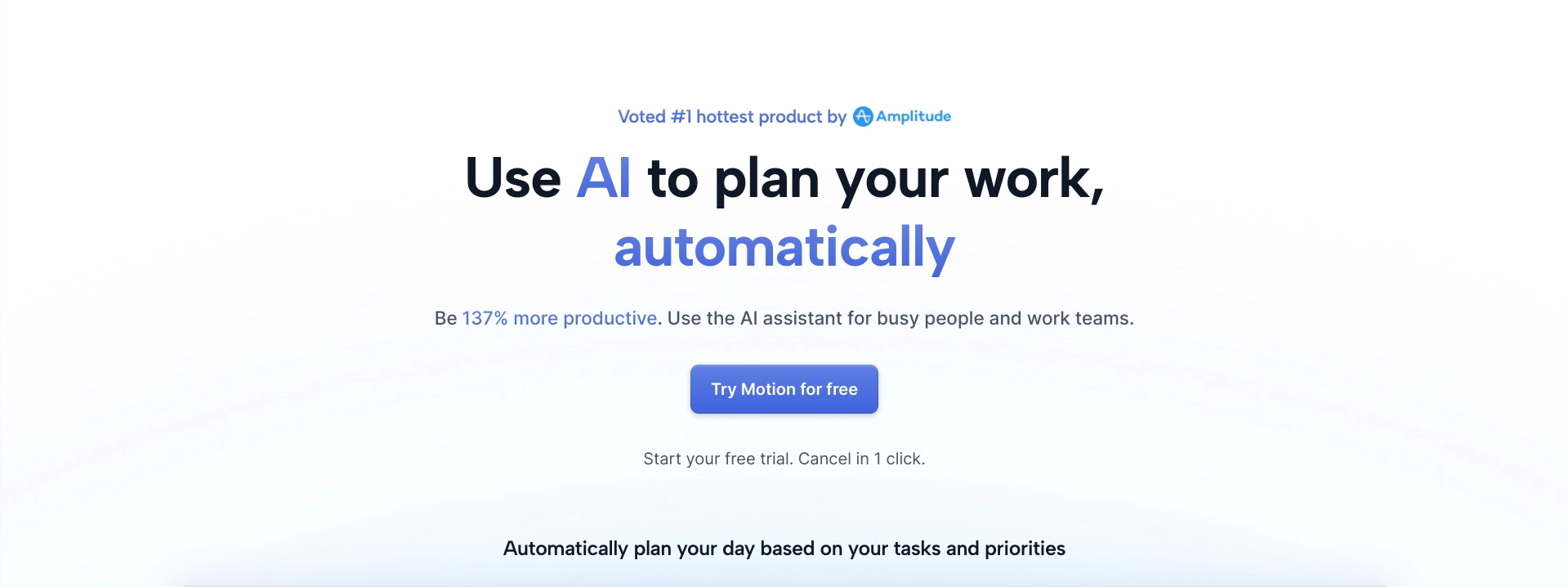
Other top project management software includes:
- Trello uses a system of boards, lists, and cards to help organize and prioritize tasks and projects.
- Wrike's comprehensive suite includes task management, time tracking, workflow customization, project planning, and reporting tools.
- Adobe Workfront helps teams work efficiently and effectively with features like project templates, resource management, and real-time collaboration.
- Zoho Projects' comprehensive features help teams manage and collaborate on projects of any size and complexity from any location.
- Basecamp's simple and intuitive platform centralizes project management, communication, and collaboration.
For team collaboration and communication
Sixty-two percent of workers have teammates located across various time zones, and 50% of these remote workers communicate with their team via messaging apps. Collaboration and communication tools help remote and hybrid remote teams work productively and effectively from anywhere.
They facilitate file sharing, co-editing, and clear communication in real time or async. They also keep communication threads organized, accessible, and searchable for future reference. Some top examples include:
- Slack: Collaborative platform where teams can communicate and share files within dedicated public or private channels and easily search for conversations and files across the platform.
- Chanty: A secure communication platform with video and voice calling, task management, content sharing, messaging, invite or suspend, and roles features.
- Troop Messenger: Offers a wide range of chat, meeting, call, and file-sharing features to help teams communicate and collaborate effectively.
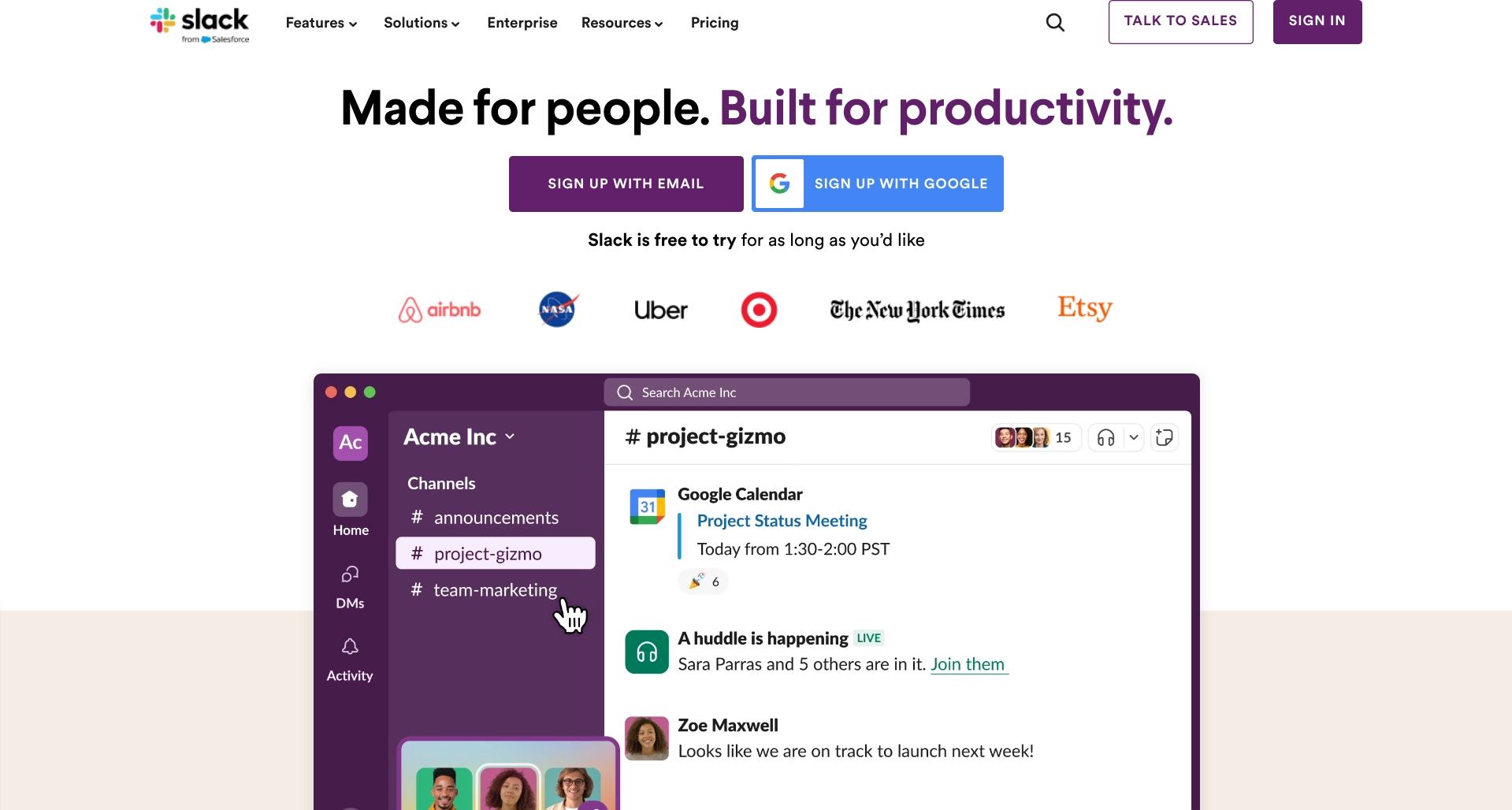
For employee management
Employee management tools help you remotely keep track of your workforce and their productivity. Whether you or members of your team work in-house, on location, or remotely, you can monitor where everyone’s time is spent and safeguard against time clock issues.
Twenty percent of organizations use employee monitoring software.
Employee management tools also help you measure and manage employee experience. They allow you to gauge where employees may be dissatisfied or struggling so you can assess and address situations accordingly.
These tools are especially useful if you manage a team or your team members work remotely. They supply information that you can’t receive via in-person feedback or observation.
Top employee management tools include:
- Hubstaff: Time tracking and team management software with activity monitoring and payroll features.
- Time Doctor: Time tracking and productivity monitoring tool with insights and analytics.
- Kickidler: Employee monitoring software offering time tracking, productivity analysis, and activity monitoring.
- Officevibe: Employee engagement platform that helps teams improve their work culture and performance.
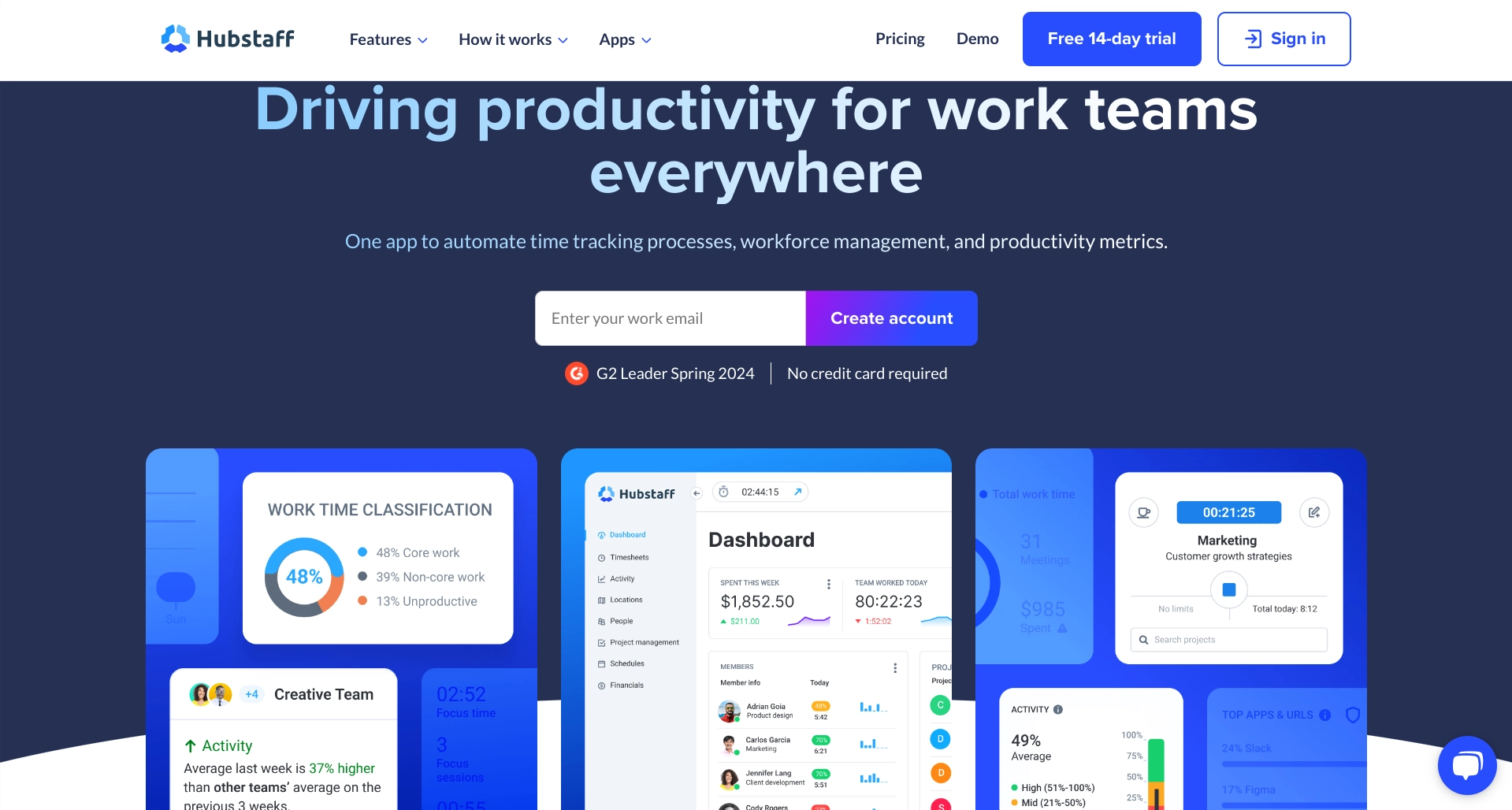
For virtual conferencing
Seventy-five percent of remote workers spend up to 10 hours weekly in meetings, and 90% of fully remote workers in the US use video conferencing software for work. So, having quality meeting software is crucial.
Virtual conferencing tools allow you to host and participate in video meetings from anywhere.
Some meeting management tools also include agenda features that facilitate planning and follow-up. Meeting minutes and recording features allow you to reference past meetings if you couldn’t attend or for review or planning purposes.
Many tools even translate video/audio captions, meeting transcripts, and chat messages into the native language of international team members.
Popular virtual conferencing tools include:
- Google Meet: Google's video conferencing tool for virtual meetings and collaboration.
- Skype: Communication platform offering video calls, voice calls, and messaging.
- Zoom: This video conferencing platform is known for its ease of use and scalability.
- Microsoft Teams: Microsoft's collaboration hub integrates chat, video calls, file sharing, and more.
- Krisp: AI-powered noise cancellation, meeting transcription, note-taking, and recording tool that integrates with all meeting apps.
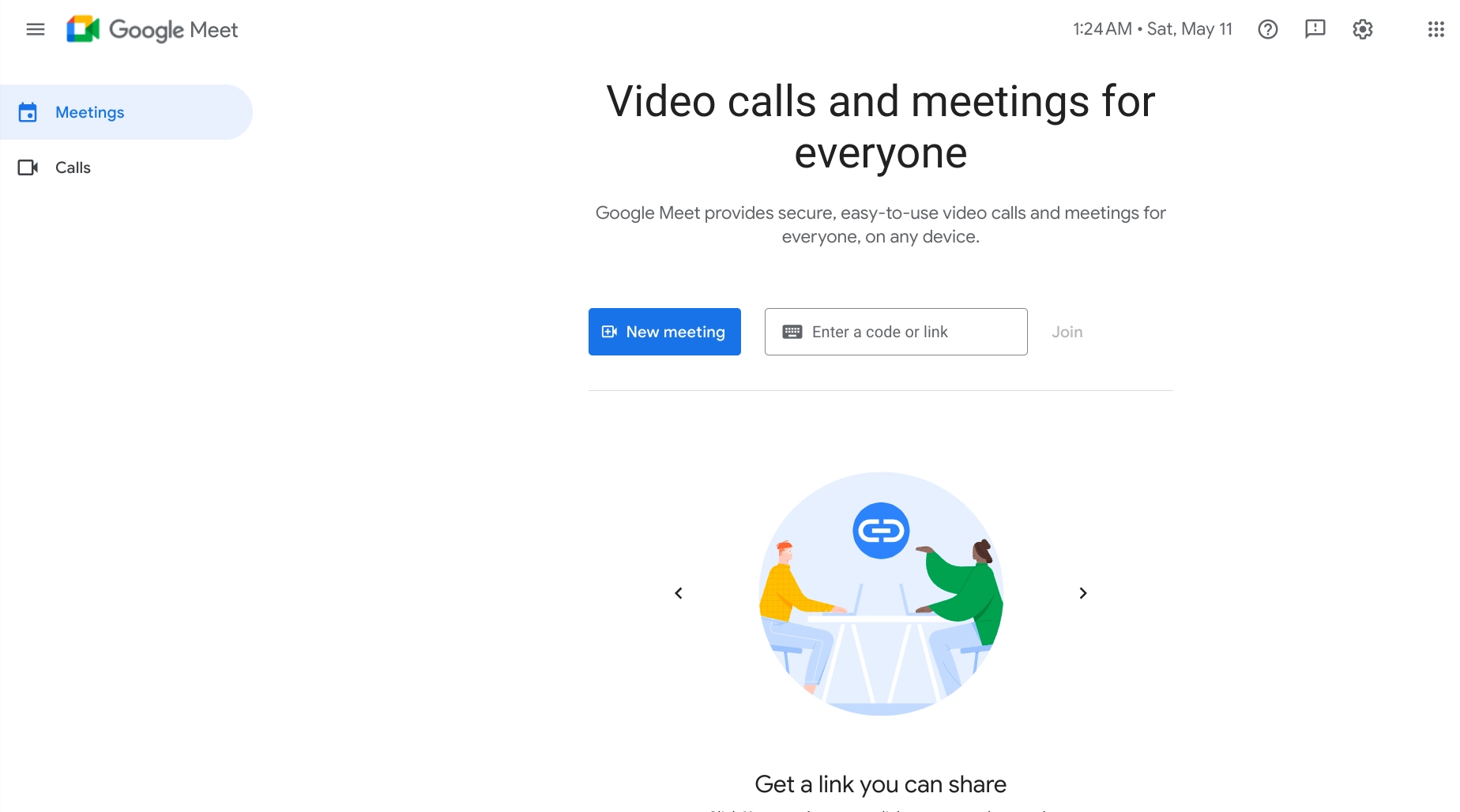
For file sharing and cloud storage
File-sharing and cloud-storage tools are essential when you work from home. They allow you to access files from anywhere, collaborate with your team remotely, and regularly back up your work.
The best-known file-sharing and cloud storage-tools include:
- Google Drive and Google Docs: Google's cloud storage and document creation tools allow for real-time collaboration.
- Microsoft OneDrive: Microsoft's cloud storage service allows you to store, share, collaborate, and sync files across devices.
- Dropbox and Dropbox Paper: Dropbox is a cloud storage service for files, while Dropbox Paper is a collaborative document-editing tool for teams.
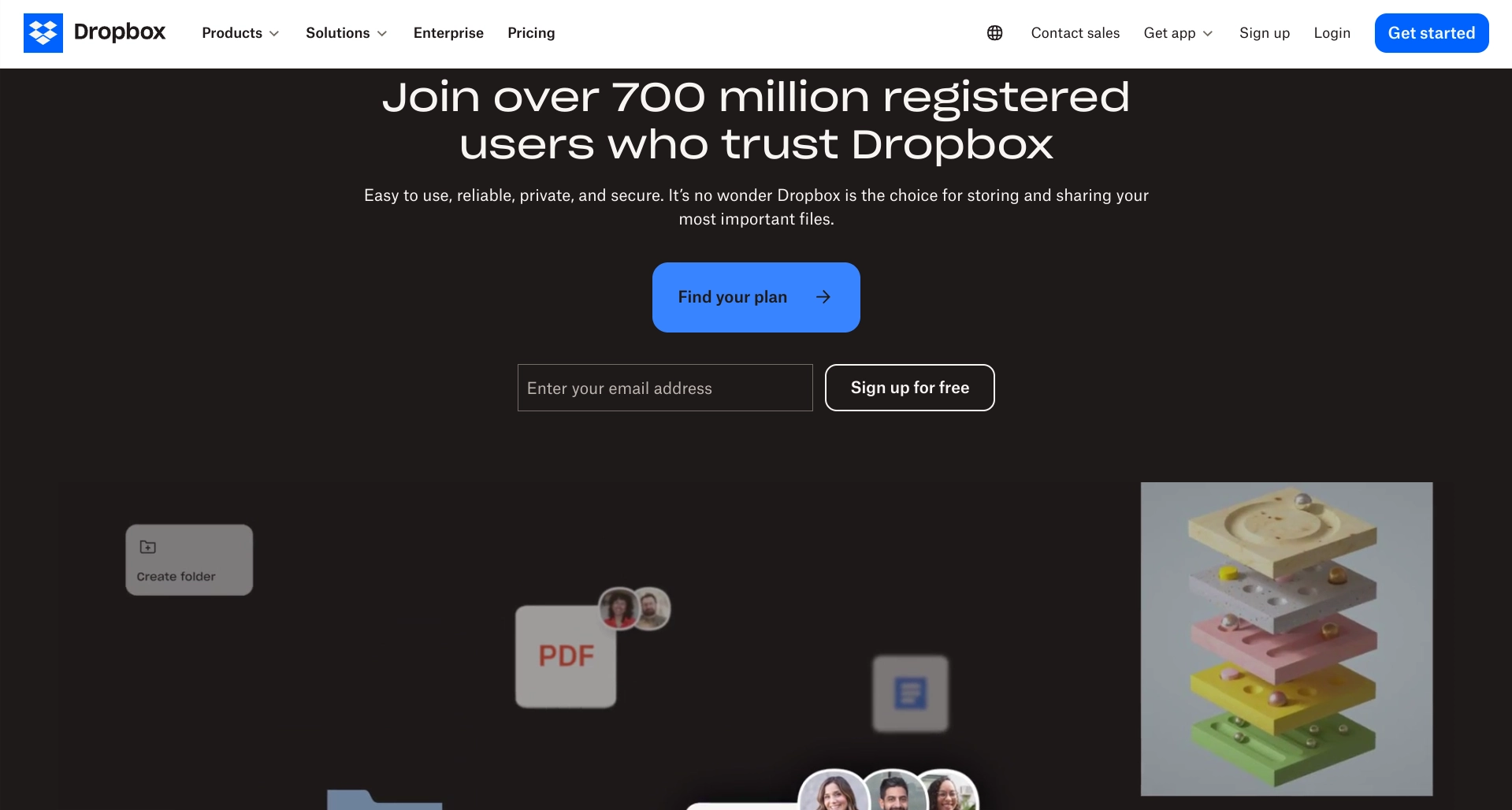
For time tracking
Time-tracking tools help keep you productive, focused, and accountable while working from home. They also help you track exactly how you spend your time and how much you spend.
This information helps you plan your day, improve efficiency, and balance your workload.
It also ensures you take breaks and maintain a good work-life balance by setting specific clock-in and clock-out times for work. Setting specific work-life boundaries like this is important, according to 93% of remote workers.
Time tracking also helps you keep track of billable hours so you can invoice clients appropriately. Top time-tracking apps include:
- Toggl Track: Simple time-tracking tool that helps you monitor and analyze how you spend your time on tasks and projects.
- TimeCamp: Comprehensive time-tracking software with invoicing, reporting, attendance management, and productivity-tracking features.
- Everhour: Time tracking and budgeting tool that integrates with popular project management platforms.
- Harvest: Time-tracking and invoicing software that tracks projects across devices and apps and then creates reports and invoices.
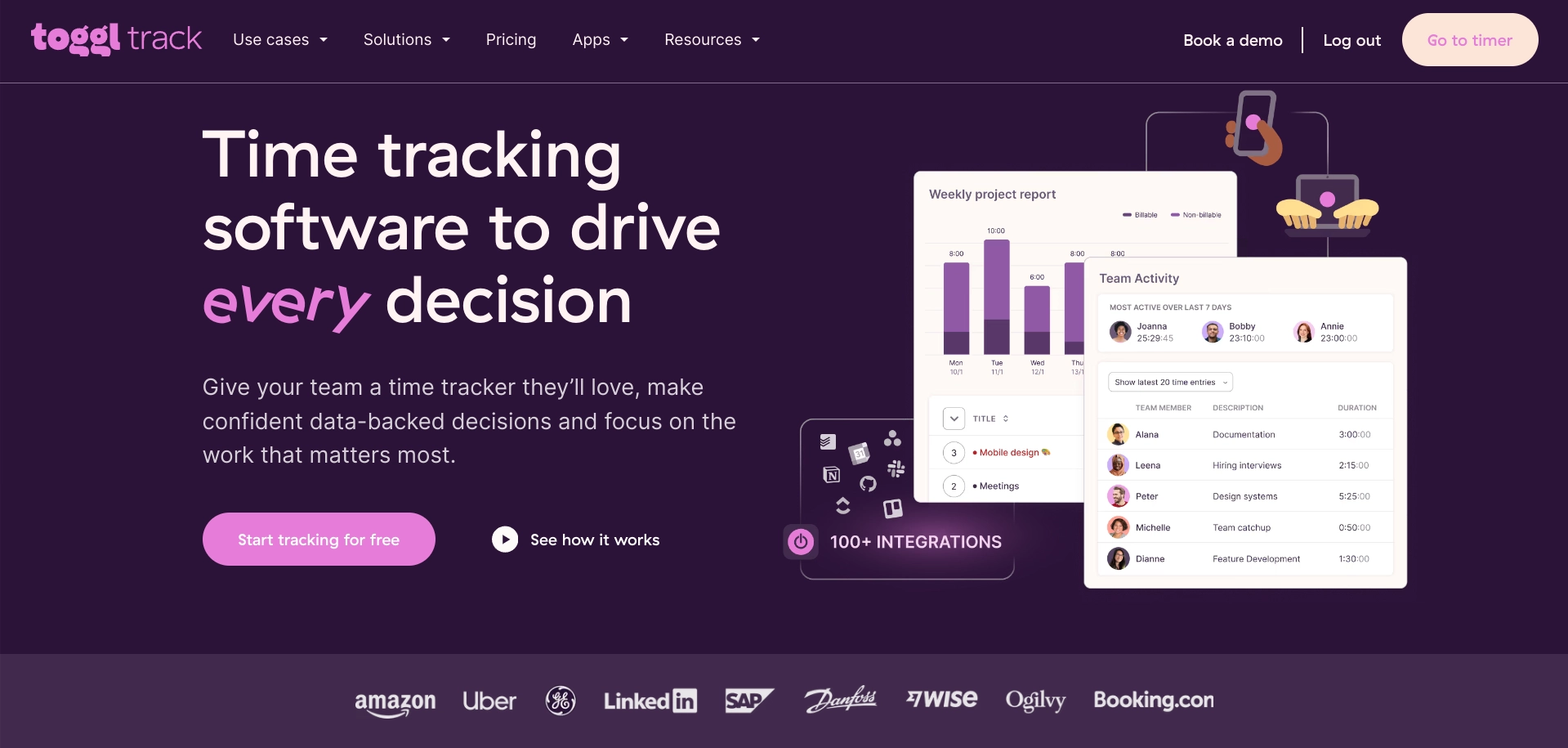
For collaborative workspace and whiteboarding
Digital workspaces and whiteboards help remote teams plan and collaborate on projects. They include various co-editing, file-sharing, and messaging features for real-time and async collaboration.
Popular tools include:
- Miro: Collaborative online whiteboard platform for visual brainstorming, creativity, and collaboration.
- Confluence: Team collaboration software by Atlassian for creating, sharing, and collaborating on projects.
- Invision: Prototyping tool for creating interactive mockups and designs for web and mobile projects.
- Sketchboard: Online collaborative whiteboard for visual planning, brainstorming, and diagramming.
- Bit.ai: Document collaboration platform for creating, sharing, and tracking interactive documents, wikis, knowledge bases, and workspaces.

For maintaining focus
Staying focused on work at home can be one of your biggest challenges. Sixty percent of remote employees block off time for focused work. The following remote work tools help you stay focused and limit distractions on your phone and computer:
- Freedom: Blocks distracting websites and apps to help you stay focused and productive.
- Forest: Helps you stay focused by growing virtual trees when you resist the temptation to use your phone.
- Flipd: Locks your phone to minimize distractions and keep you focused on tasks.
- Cold Turkey: Blocks distracting websites and apps for a specific block of time to improve productivity.
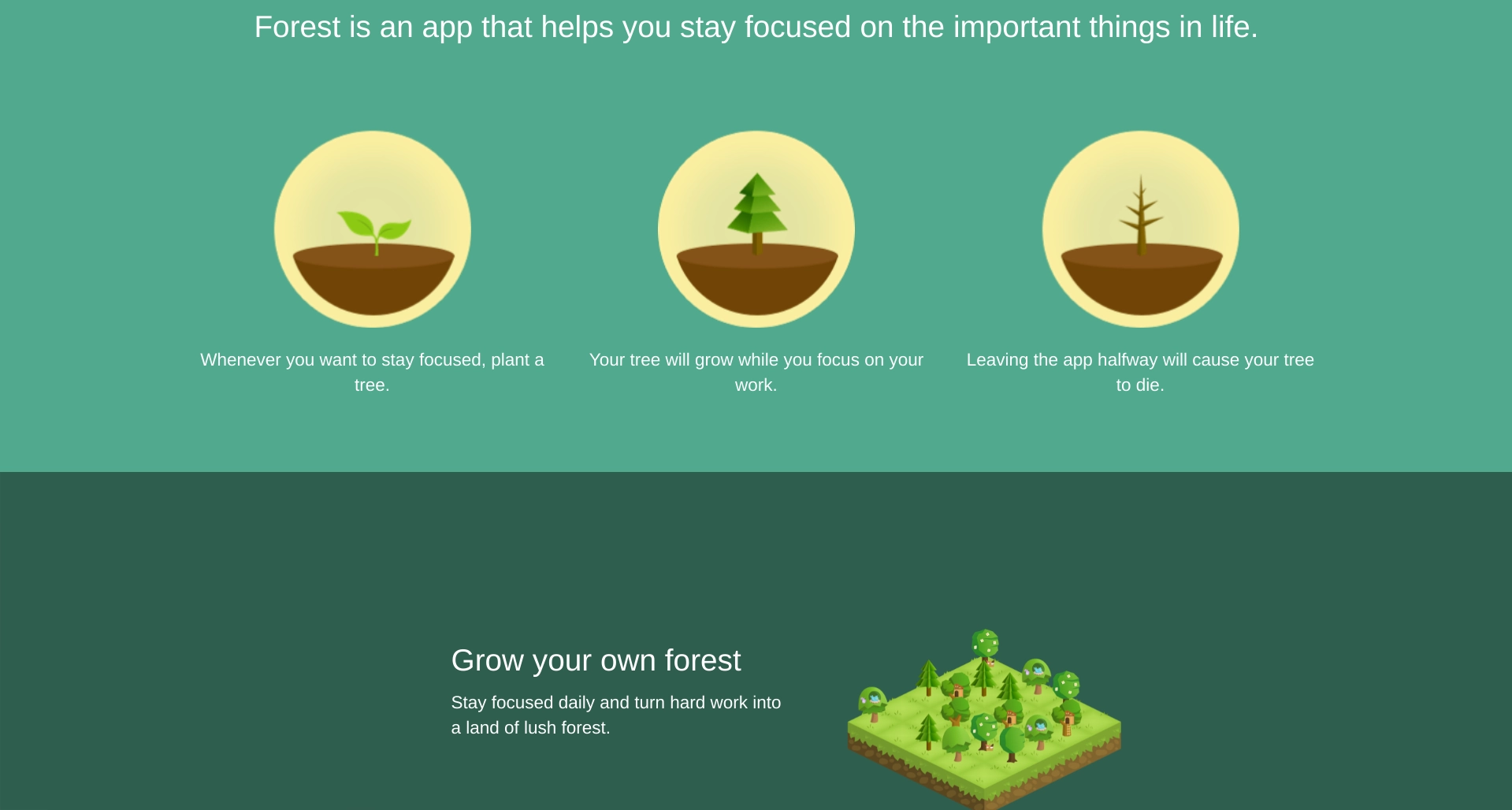
For password management and internet security
When you work using personal or public Wi-Fi, it's important to protect any sensitive, confidential, or private information.
Password management and internet security tools are crucial for guarding against hackers, phishers, viruses, and malware. A few options include:
- LastPass: Password manager for safe storage of passwords and quick, secure access to accounts.
- RoboForm: A password manager that securely stores and auto-fills passwords and other personal information.
- Dashlane: A password manager and digital wallet that securely stores sensitive information.
- VPN: A tool that masks your IP address and creates a safe browsing channel to ensure secure and private network usage.

For remote desktop
Remote desktop tools enable you to access other desktops from home. This allows you to remotely access files on your in-office computer or access the computer of a colleague you're collaborating with.
You can also remotely access client computers, particularly if you offer tech support. Examples of remote desktop tools include:
- TeamViewer: Remote access and support software for screen sharing, online meetings, and file transfer.
- AnyDesk: Remote desktop software that allows you to access and control a computer from any device, including tablets and mobile phones.
- Chrome Remote Desktop: Google's remote desktop tool lets you access other computers or remote access to your computer over the Internet.
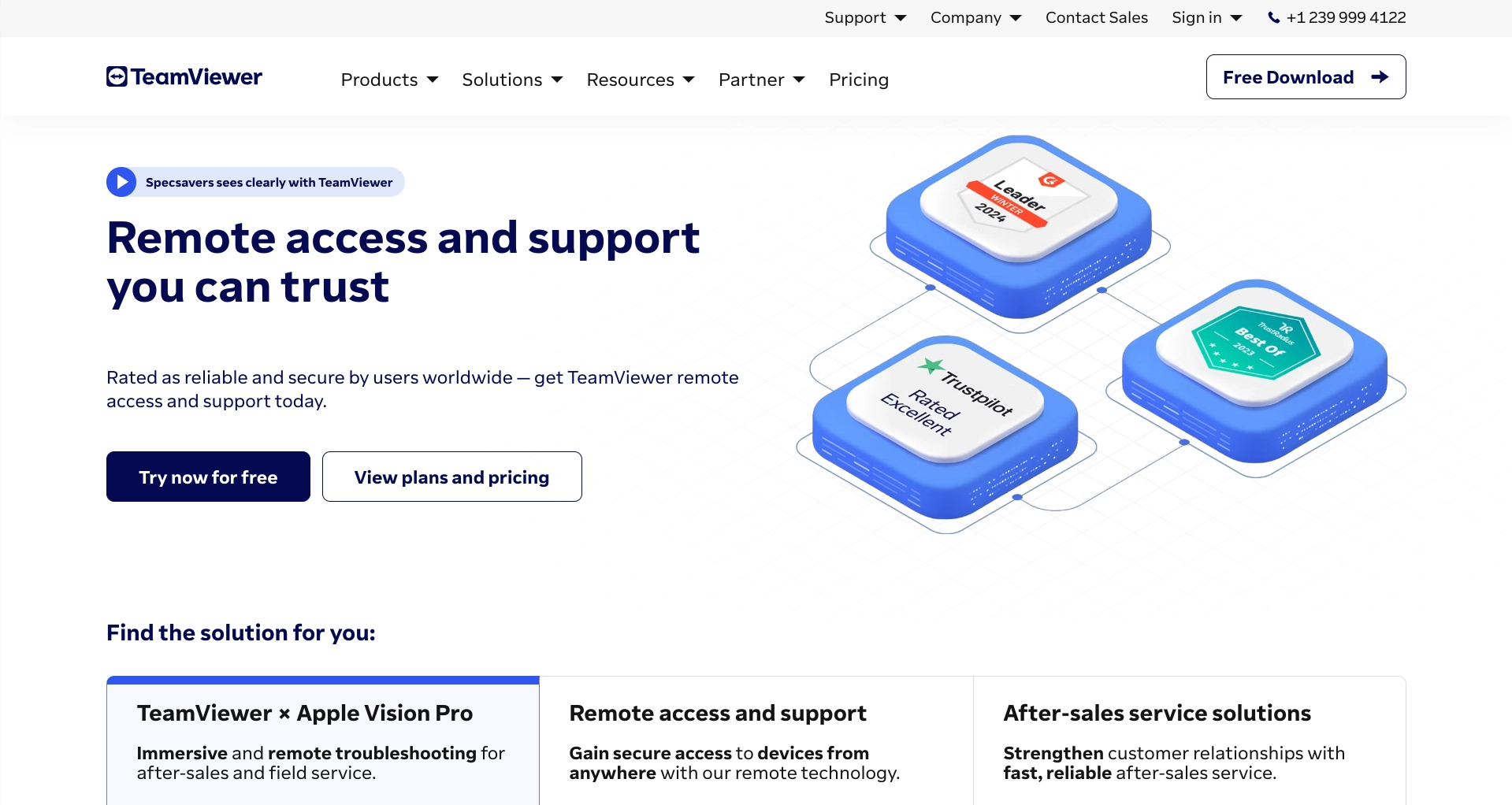
For workflow automation and app building
Workflow automation and no-code app-building tools integrate your tools and streamline repetitive tasks. They save time, increase efficiency, and boost productivity.
- Adalo: A no-code platform for building mobile apps with drag-and-drop features and customizable templates.
- Glide: A platform for building mobile apps from Google Sheets without code.
- Zapier: A tool that automates workflows by connecting apps and services.
- IFTTT (If This Then That): A free automation tool that connects apps and devices to automate simple tasks.
- Automate.io: An integration platform for connecting cloud applications and automating workflows.
- Airtable: A cloud collaboration service that combines a spreadsheet interface with a database.

Work-from-home hardware
The next type of essential work-from-home tool is home office tech. Your needs may range from bare essentials to large-scale production, depending on the nature of your work. In either case, your hardware setup impacts your ability to work effectively. Common essentials include:
- Laptop or PC - a computer on which to perform all your work.
- High-speed internet - reliable, fast, and secure internet for productivity and connection from anywhere; includes choice of Wi-Fi router/modem and mobile hotspots.
- Keyboards - Bluetooth, wireless, and ergonomic options for improved comfort, increased typing speed, and reduced wrist strain while typing for long periods.
- Mice and mouse pads - for increased speed and precision and to reduce wrist strain.
- Extra monitors - full-sized or portable options for additional screen space, accommodating work on multiple tabs, and simultaneous video conferencing and collaboration.
- Headphones, headsets, and speakers - includes noise-canceling, wireless, and USB options for clear audio during calls and meetings, playing music, and improving focus while cutting out distractions.
- Webcams - for clear video during client calls, team meetings, and presentations.
- Microphones - to ensure your voice is clearly heard during calls.
- Cables, charging adapters, and power strips - for keeping all your devices charged and connected while managing your power usage. Includes spares, just in case.
- Multi-port hubs and docks - for connecting all your devices and externals.
- Printer/scanner - for maintaining and sharing physical or digital copies of important documents. This includes mobile apps that enable document scanning via your phone’s camera and Bluetooth printing.
- Mobile phone - for quick email, task, calendar management, communication, or to act as a mobile hotspot when needing a secure internet connection.
- Tablet - for working or video conferencing on the go; it can also act as an extra screen.
- External portable storage - for extra storage and frequent file transfers.
Home office equipment
The third essential work-from-home tool is your home office equipment. This equipment primarily accommodates your physical needs while working for long periods. These essentials include:
- Desks - a suitable workspace. Choose from traditional, standing, or lap desks, depending on your preferences.
- Desk chairs - a comfortable, ergonomic chair to maintain your posture while sitting for long periods.
- Monitor mounts, laptop stands, tablet stands, and phone holders - for accommodating extra screens and keeping them within your eye range. Adjustability helps reduce eye and neck strain.
- Desk lamps - for adequate lighting.
- Desk pads - for preserving your desk, securing papers and externals, maintaining desk organization, and reducing arm and wrist strain.
Miscellaneous home office enhancements and accents
The final type of work-from-home tool is supplemental home office supplies. These enhancements and accents help focus by providing an ambiance, placing you in a good headspace, and offering respite. These items include:
- Desk organizers - for reducing clutter and ensuring everything’s reachable and findable.
- White noise/music - limiting distractions, maintaining focus, and placing you in a productive mood.
- Plants - to freshen up your space and provide a touch of nature while you’re inside for long periods.
- Comfort items - include blankets, pillows, slippers, etc., to maintain comfort while at work.
- Pressure relief - includes lumbar pillows, ergonomic mats, massagers, and other items that offer joint support.
- Scented accents - include scented candles, plug-ins, reed diffusers, or incense for relaxation.
Elevate your productivity through effective work-from-home tools
As the world embraces remote work, finding the right tools can make all the difference in your productivity and work-life balance. The right remote tools and equipment can streamline your workflow, keep you connected with your team, and help you stay organized and healthy.
Are you ready to transform your remote workweek?
Determine what equipment you need and what you need to help contribute to your office ambiance. Fill up that Amazon cart.
Then, check out the software options listed and select a few you'd like to test drive. Motion offers a 7-day free trial. Leverage the time you'll save on building your schedule to upgrade your office space and get some serious work done.

Tiffany has a BA in Business Management and years of experience writing for SaaS and digital marketing blogs. She bristles at typos, broken links, and 2015 statistics circulated through 2023 content. When not writing, Tiffany's either reading, baking, or mothering her spoiled rescue pittie.
